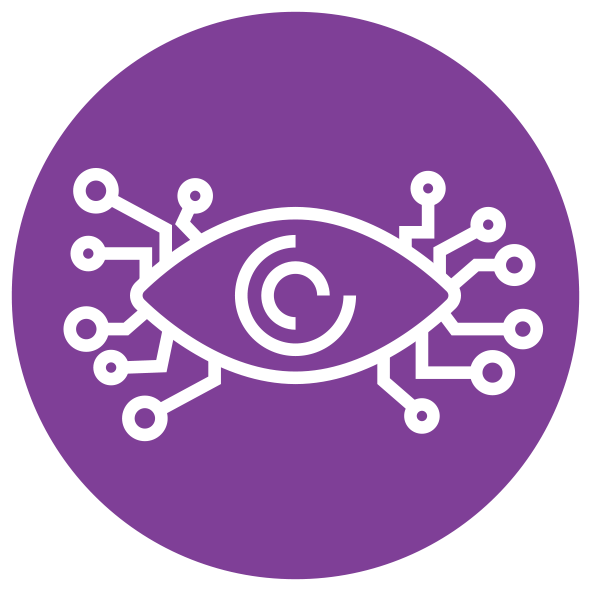Submitted by Ioana Burtea
on January 07, 2024
** QUANTUM SHORTS 2023/2024: SHORTLISTED
>> Read an interview with the author
Mark always thought that entanglement theory was a bit romantic. He said there’s comfort in knowing that two infinitesimal specks can be eternally intertwined regardless of how far apart they are.
I met Mark at the International Conference on Advances in Neutron Physics in Tokyo. I was presenting a paper on new measurement techniques and he’d come up to ask me some questions afterwards, blending into a sea of inquiring physicists and fawning grad students. It wasn’t until we were in the same restaurant later that day that I actually took a good look at him. He was tall with sandy brown hair and what you could describe as intelligent eyes. To me, they were just his big brown eyes, always darting around the room trying to absorb everything.
Something people often forget about entangled particles is that they’re not always the exact same. Take two entangled photons of red/blue light. You measure one and it’s red. The other will be blue.
What I’m trying to say is that as similar as we were, Mark and I were also very different. We spent the entirety of that first evening arguing. About our favorite physicists, string theory vs. quantum, the latest articles in Nature, even politics. The only things we could agree on were that the ramen was the best we’d ever eaten and that we should exchange numbers. We spent the remaining few days in Tokyo contentedly enjoying each other’s company in a perpetual state of opposition. Not to mention, he was at a big East Coast lab and I was working in Switzerland at the time.
Afterwards, I started to focus on my research and applied to increasingly more conferences. I told my colleagues I was doing it for the grant money and networking opportunities, but I think they saw through that – Mark and I shared a hotel room each time. A few days in Denver, a week in Singapore. We got closer in these skips and hops of the conference circuit. In the summer when Mark’s university was closed, he’d come visit me and we’d backpack around Europe together. My lab called it Schrödinger’s relationship. When we were apart, we were simultaneously ‘on’ and ‘off’. But as soon as we were together, the superposition was resolved and we were most definitely ‘on’.
It went on like that for a few years and truth be told, I didn’t think it would really change. It sounds cliché I suppose but we were both focused on our careers and there just aren’t that many job opportunities in this field of work. In the end, it was thanks to those many conference visits that we ended up moving in together. A professor from an American school had seen one of my presentations and invited me to an interview. Someone had left halfway through the academic year and she needed a replacement to manage the graduate program. She thought my research would be a good fit and liked the way I lectured. The salary package and the prestige of the lab were a big step up. I was excited, and not just because I’d suddenly be in the same state as my long-distance not-quite boyfriend. The logistics of the move were tricky though. No one was renting apartments near campus in the middle of the school year. I called Mark to complain and he immediately offered up moving in with him. It was commuter distance and he had more than enough space. I asked him if he was sure. He shrugged his shoulders and said “statistically, it was going to happen at some point. May as well be now”. He said those same words in his wedding vows two years later. I liked that.
And then he got sick. He’d been complaining of migraines so I forced him to visit the doctors. I thought it would just be a vitamin deficiency or something. I knew it was bad news when the clinic called and said he had to go see the doctor that same day for his blood work results. Everything moved quickly after that. They scheduled his first surgery and started him on radiation therapy. Mark was fascinated by the technology. “Curie will cure me!” he declared. Then there was another surgery, and another.
You meet a lot of people in the cancer ward. Some of them fade slowly, as if the disease is chipping away at them bit by bit every day unrelentingly. It wasn’t like that with Mark. He was himself to the very end, always joking and stubborn. He’d wheedle with the nurses for a snack from the vending machine. “Nobody said this was going to be easy but by god they never said the food would be this bad” he’d laugh over his hospital pudding cup. And even though I felt like crying, I’d laugh too.
I think you know what happened next. Life may be a string of randomness but death is as certain as the laws of the universe. It’s been four months now. My colleagues said I should try to get back to work and get my routine back. So here I am, thinking about two entangled particles, separated by millennia of light, and who will never meet again.
About the Author:
Ioana Burtea is a Canadian-Romanian living in London. She is a technology lawyer by day and a science fiction writer by night. Her poetry was featured in Cats Cradle by the Poetry Institute of Canada and other anthologies.



